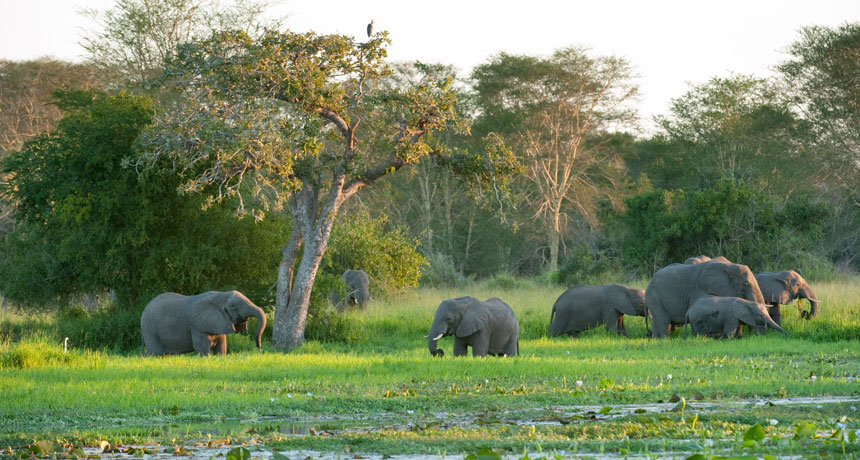War wrecked an African ecosystem. Ecologists are trying to restore it
Predators and prey roam Gorongosa in Mozambique once again, but there’s still a long way to go

REVIVING AN ECOSYSTEM War nearly wiped out Gorongosa National Park’s large mammals, including its elephants, seen here wading in the park’s floodplains. Mozambique’s government, a nonprofit organization and scientists have teamed up to bring back those animals’ populations and revive the park’s once thriving ecosystem.
Ariadne Van Zandbergen/Alamy